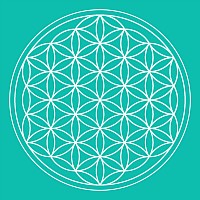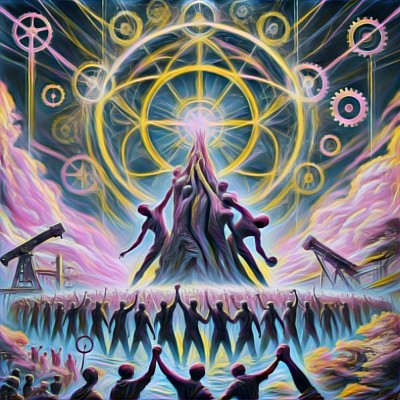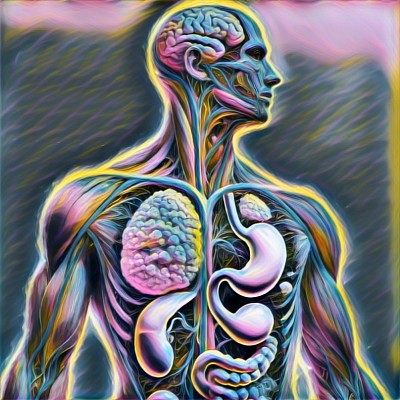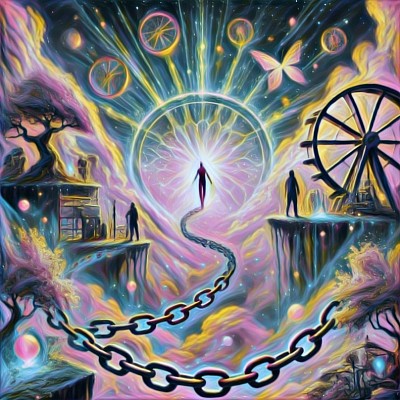The Strength of the Working Class
Unlocking Our Potential: A Framework for Socioeconomic Stability
By adding a third element to our hybrid system, we create a tri-brid socioeconomic system that integrates the strengths of capitalism, communism, and socialism into a cohesive system; each element playing a vital role in symbiotic support.
Self-sufficient households allow workers to challenge a system designed to extract value from them, while offering little in return.
The path forward lies in the labor force reclaiming ownership of its power. This is how we will shape our current system into one that recognizes the worth of every person's contribution and begins prioritizing people over profits.
The Tri-brid Socioeconomic System: Creating Stability
It helped me to imagine our economy like a living body. Capitalism functions like the the muscular system, propelling civilization forward. Communism is the organ system that distributes resources as needed. This is how the tri-brid system works:
Without a skeletal system, these systems collapse and rot.
Capitalism as Muscle
- Fueled by innovation and personal ambition
- Rewards hard work and hustle
- Drives growth and productivity
Communism as Organs
- Distributes life-sustaining resources
- Ensures no one goes without basic needs
- Maintains balance across the system
Domestic Socialism as the Skeleton
- Provides structure that allows for efficient system development
- Keeps the labor force standing through hard times
- Units the majority class and empowers collective action
We envision a future where the rot is kept at bay and the majority is not crushed by the weight of the collapse.
We're building something new that works for everyone and creating a practical blueprint for it. This isn’t just a utopian dream:
1. Freedom from Paycheck-to-Paycheck Living
Providing affordable, high-quality communal living arrangements is how Finding Camelot reduces the financial burden of basic needs like housing, utilities, and services. This allows members to live sustainably without needing to dedicate every waking hour to survival.
-
When people no longer live paycheck-to-paycheck, they gain the freedom to reject exploitative jobs.
-
Employers, who rely on desperation to maintain low wages and poor conditions, will be forced to compete for labor by offering fair compensation and better treatment.
2. Collective Empowerment Through Community
Finding Camelot’s communal model functions as a de facto unionization of its members. By sharing resources, responsibilities, and decision-making, the organization enables the working class to act collectively and support one another.
-
Members collectively negotiate their worth in the workforce, leveraging their ability to walk away from exploitative jobs.
-
Community decision-making fosters solidarity and dismantles the isolation that employers often exploit to keep workers disempowered.
3. Addressing Housing as a Right
Finding Camelot treats housing as a right, not a privilege. By pooling resources and offering room credits tied to membership levels, the organization ensures members can access secure, dignified housing without being beholden to landlords or predatory practices.
-
Reducing housing insecurity eliminates one of the primary tools of control wielded over the working class.
-
With stable housing, members can focus on personal growth, skill-building, and job mobility, rather than being trapped in cycles of poverty.
4. Reclaiming Time and Work-Life Balance
By reducing financial pressures, Finding Camelot enables members to work fewer hours while maintaining a high quality of life. This gives people the time to pursue personal, professional, and educational goals.
-
Freeing up time restores workers’ ability to organize, advocate for better working conditions, and invest in their own empowerment.
-
Employers lose the leverage of overwork and burnout, as workers can choose to leave toxic environments without fear of immediate financial ruin.
5. Sharing Wealth Through Cooperative Living
Our structure ensures that wealth is reinvested into the community rather than extracted for profit. Membership fees fund shared services, home improvements, and communal benefits, creating a system where members directly see the value of their contributions.
-
This challenges the profit-driven model where excess value (profits) is taken from workers and hoarded by corporations.
-
Members experience the benefits of their labor firsthand, reinforcing the idea that wealth should be shared equitably.
6. Building a Culture of Empowerment
Through household roles, democratic leadership, and programs like CareShare, Finding Camelot instills a sense of agency and self-worth in its members. This shifts the narrative from one of disempowerment to one of collective action and mutual support.
-
Workers who feel valued in their community are less likely to tolerate dehumanizing conditions in the workplace.
-
They become confident in asserting their rights and seeking jobs or projects that align with their values.
Finding Idyllic Happiness
By breaking the cycle of economic dependency, Finding Camelot functions as a social and economic safety net for its members. This effectively acts as a unionization of the working class as a whole—not confined to any single workplace but as a collective force united by shared resources and values.
Finding Camelot doesn’t just provide housing; it offers a revolutionary model for economic empowerment and collective action.
By addressing the root causes of labor exploitation and giving people the means to reclaim their power, it positions itself as a transformative force in restoring dignity and agency to the working class.





